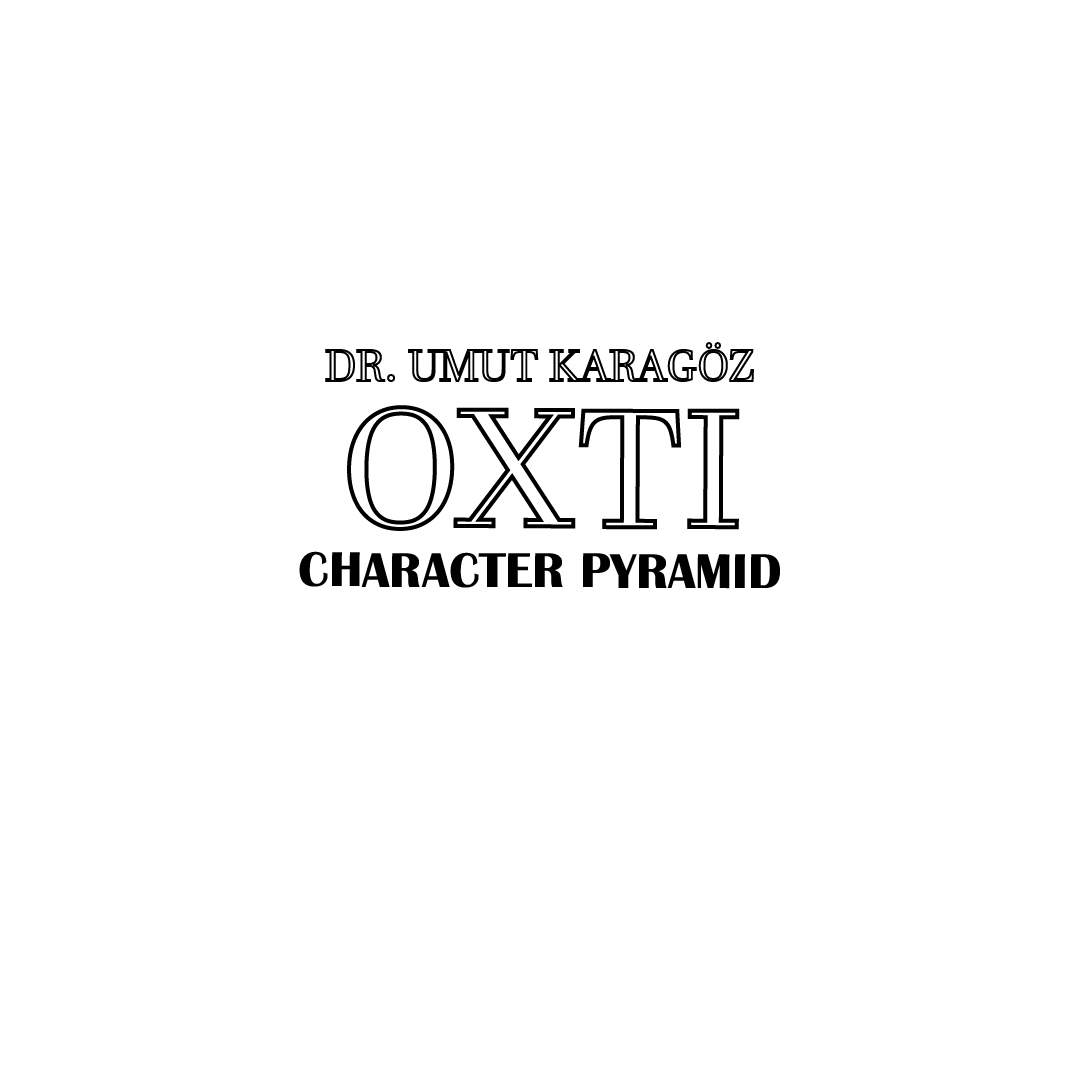What if character analysis didn’t start with labels, types, or traits—but with the universe itself?
The OXTI character model, officially known as the Character Pyramid Theory, developed by clinical psychologist and theorist Umut Karagöz, is not just a technique—it is an original, comprehensive framework born out of years of clinical work, psychoanalytic insight, neuropsychological study, and systemic observation. Formed through the author’s rich experience in hospital psychiatry wards and therapeutic environments, this model takes a radically different approach to the question: What is character?

Unlike traditional models that reduce personality to fixed categories, the Character Pyramid begins with macro-universal structures and narrows its focus down to the individual psyche. It perceives character as a living, layered system, shaped by everything from social context and fate to cognition and embodiment. Where others reduce identity to simplified test results, the OXTI character model expands our understanding, revealing the complexity beneath.
From Systems to Souls: The Inner Mechanics of the Character Pyramid
The Character Pyramid Theory rejects the typological determinism of popular personality systems. Instead, it introduces a multi-level structure of human identity, pulling from neuroscience, psychoanalysis, literature, and systems theory. At its core is a revolutionary inversion: instead of building from the individual upward, it starts with the whole—the universal, the cultural, the environmental—and works its way into the self.
This top-down method is more than philosophical. It is methodologically structural. The pyramid includes interconnected elements such as stress systems, psychopathological patterns, social hierarchies, and existential coordinates. Together, they form a dynamic identity matrix.
The OPS-T Character Cores, introduced in the first volume of this theory, function as symbolic entry points. While not the entirety of the model, they allow readers, educators, therapists, and creators to engage with the system through recognizable human patterns. These cores are more than archetypes—they are psychological signals pointing toward deeper structures.
What makes this model particularly effective is its versatility. It is not confined to clinics or academic institutions. It can be used to understand literary characters, political behavior, artistic expression, or even leadership profiles. It is, by nature, transdisciplinary. It organizes chaos into coherence, while leaving room for personal interpretation and existential ambiguity.

The Character Pyramid Is Not a Model—It’s a Language
In a culture that craves instant definitions and rapid answers, the OXTI character model asks us to take a different path—one that values observation, patience, and complexity. It shifts the focus from “What kind of person is this?” to “What are the systems that make this person who they are?” This is more than semantics—it’s a paradigm shift.
Umut Karagöz is not merely offering a new theory. He is proposing a new lens. A lens that acknowledges contradiction, allows depth, and challenges superficial interpretations of the human psyche. In this world, character is no longer a list of adjectives—it is a philosophical and structural unfolding of one’s place in the web of being.
The OXTI character model is a constellation, not a category.
A system, not a score.
A language, not a label.
For readers, clinicians, educators, and thinkers seeking to truly understand character—not in fragments, but in full—this theory opens a gateway. It’s not just a guide to who we are; it’s a path toward who we are becoming.
